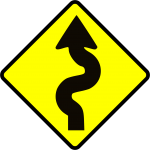
Photo from www.pixabay.com
I may need to do some binge blogging over the next month. My mind is racing with thoughts, and it is hard to know which direction to go since my professional compass has been spinning so much since March. (Cliffhanger: I’ll deal with those changes in another post.) Summer is an ideal time to weigh technology options for the upcoming year. What should educators do to make sure they are a level up by the next time eager students are seeking their direction? (In June, all images relating to students in my head convey giddiness.)
TOOLS – Select three new tools and learn how to use them. Bookmarking, retweeting, or electronically filing the tool or website does not count. Roll up your sleeves and get your keyboarding fingers dirty while seeing what each tool can accomplish. It does not matter if you are pioneering the tool for your school or replicating something that the colleague across the hall has been using for two years. Create a product with the tool and save it so when your activity comes to fruition next year, you can show your students evidence of your learning and prove that the tool works.
ALIGNMENT – Align your “finds” with a task. What activity has been difficult to assess? What have your students been “flat” or discouraged in examining? How can your shiny, new technology find transform something that has been a dud for you and your students? A teacher is going to be more likely to take a risk if the payoff is bigger. Use this new gadget to inspire a topic or skill that has been one of your weak spots. More importantly, identify that simply using the tool is not sufficient to guarantee improvement. Having apps, extensions, and websites kicking around your head like ping pong balls in a bingo barrel will only overwhelm you. The key comes in figuring out if that “number 11” belongs in the “B” column or if it is actually better suited for the “0” column. Sorry to take that bingo analogy so far, but the educator interpretation of that is to determine if the tool will work best for delivery, discovery, collaboration, formative assessment, summative assessment, or multiple purposes. It might be wise to create a table to record the pairings.
PREPARATION – Design at least one activity within the context of a lesson and unit. Play architect with your new discovery as though you were going to launch the lesson tomorrow…and save it so you will find it when you get there next year. Besides having a lesson completely ready (hey, just 179 more to go), this may ignite more summertime preparation, ideally with the other tools you selected. In addition, your course unit may take shape. Creating a cornerstone lesson is like finding the perfect piece of furniture and realizing that the rest of the room is enhanced by its presence. As circumstances demand adjustments, it will still be possible to make those; however, those are less overwhelming with the skeleton of a solid lesson framed.
What will be on tap for your students when they return? How will you quench their desire to learn? How will you serve something they have never tasted? If you are taking advantage of professional development opportunities and getting exposed to new ideas, apply these steps to ensure that these hours are not merely time spent or a check cashed. Use this gift of time to become a more effective instructor who heightens student understanding and interest.

 In an effort to extend students’ skills with primary documents, offer an arrhythmic assessment in the midst of a series of short course units, incorporate technology, and meet content expectations, I devised a project-based assessment for a unit that introduced students to the early years of the Cold War (1945-1960). As has typically been the case when I have facilitated a task like this, our class experienced mixed results. I would definitely incorporate this project again, but I would like to share some of my takeaways – partly so I don’t allow frustration with imperfect results to shape future decisions.
In an effort to extend students’ skills with primary documents, offer an arrhythmic assessment in the midst of a series of short course units, incorporate technology, and meet content expectations, I devised a project-based assessment for a unit that introduced students to the early years of the Cold War (1945-1960). As has typically been the case when I have facilitated a task like this, our class experienced mixed results. I would definitely incorporate this project again, but I would like to share some of my takeaways – partly so I don’t allow frustration with imperfect results to shape future decisions.